Carrier Performance 25SPA5 Handleiding
Carrier
Warmtepomp
Performance 25SPA5
Bekijk gratis de handleiding van Carrier Performance 25SPA5 (2 pagina’s), behorend tot de categorie Warmtepomp. Deze gids werd als nuttig beoordeeld door 56 mensen en kreeg gemiddeld 4.7 sterren uit 28.5 reviews. Heb je een vraag over Carrier Performance 25SPA5 of wil je andere gebruikers van dit product iets vragen? Stel een vraag
Pagina 1/2

A NOTE ABOUT SAFETY
Any time you see this symbol in manuals, instructions and on the
unit, be aware of the potential for personal injury. There are three levels
of precaution:
DANGER identifies the most serious hazards which will result in severe
personal injury or death.
WARNING signifies hazards that could result in personal injury or
death.
CAUTION is used to identify unsafe practices which would result in
minor personal injury or product and property damage.
NOTE is used to highlight suggestions which will result in enhanced
installation, reliability, or operation.
ABOUT YOUR HEAT PUMP SYSTEM
Our products are designed, tested and built in accordance with US
Department of Energy standardized procedures and other standards;
however, actual operating results and efficiencies may vary based on
manufacturing and supplier tolerances, equipment configuration,
operating conditions and installation practices.
Identifying Your System
Your new heat pump system is what we call a ”split system.” It has an
outdoor unit and an indoor unit connected to each other with copper
tubing called refrigerant lines. Each of these units has a rating plate with
the model and serial numbers you will need to reference when calling an
authorized dealer about your system.
Take a few moments now to locate those numbers and record them in the
spaces provided on the cover of this booklet.
Using Your New System
Your heat pump system is controlled by a wall-mounted thermostat
installed inside your home. Because there are so many thermostats
available, please refer to the owner’s manual supplied with your
thermostat for complete details on system operation.
2-Stage Operation
If you own a two-stage heat pump system, you may notice your system
runs for longer periods of time. When appropriately sized, nearly 80%
of the time it’s running, it is operating in low-stage, and your indoor
temperature will remain more consistent with fewer drafts, better
humidity control, enhanced comfort and enhanced energy efficiency.
Heating and cooling Your Home
For heating or cooling operation, make sure the System or Mode control
is set to the appropriate mode. Then, adjust the Temperature control to
your desired setting. Finally, use the Fan control to select Automatic
(turns on and off as heating is needed) or On (runs continuously).
Depending on your typical heating needs, your home comfort system
may also include a supplementary heating source that will automatically
turn on as needed. You may also select this heat source manually if
desired.
Operation Under Extreme Conditions
Your heat pump will run as long as necessary to maintain the indoor
temperature selected on your thermostat. On extremely hot days, your
heat pump will run for longer periods at a time than on moderate days.
Your system will also run for longer periods of time under the following
conditions:
• Frequent opening of exterior doors
• Operating laundry appliances
• Taking hot showers
• More than the usual number of people present in the home
• More than the normal number of electric lights in use
• Drapes or blinds are open on the sunny side of the home
IMPORTANT HEAT PUMP FACTS
Heat pump systems have a few unique features and operations that you
should be aware of:
• During the heating cycle, air from your registers may seem cooler
than you may expect. This is because your heat pump delivers a
constant flow of air at around 90° F (32º C) to about 105° F (41º C),
compared to sudden blasts of hot air provided by a typical furnace.
This air may feel cool if it is slightly below your body temperature,
however it is warm enough to keep your home comfortable.
• Ice or frost may form on the outdoor coil during winter heating
operation. Your heat pump will automatically melt the ice using its
defrost cycle. During defrost, you may see steam or fog rising from
the outdoor unit, which is normal.
• Heat pumps installed in areas expecting snow are elevated with
support feet.
• In Extreme weather conditions with heavy snow and ice storms,
build-up may accumulate on the top of the heat pump and fan blade,
causing excessive vibration that may result in damage and or reduced
performance. In these conditions, it may be appropriate to turn the
heat pump off and run on auxiliary heat until snow and ice has cleared
OWNER’S MANUAL
SPLIT-SYSTEM HEAT PUMP
USING R-410A REFRIGERANT
WARNING
!
PERSONAL INJURY, DEATH AND / OR PROPERTY
DAMAGE HAZARD
Failure to follow this warning could result in personal injury, death
and/or property damage.
Improper installation, adjustment, alteration, service, maintenance, or
use can cause explosion, fire, electrical shock, or other conditions
which may cause personal injury or property damage.
Consult a qualified installer, service agency, or your distributor or
branch for information or assistance.
A qualified installer or service agency must use factory-authorized
parts or accessories when modifying this product.
Read and follow all instructions and warnings, including labels shipped
with or attached to the unit before operating your new heat pump.
WARNING
!
ELECTRICAL SHOCK HAZARD
Failure to follow this warning could result in personal injury or death.
Disconnect all electrical power to the indoor air handler or furnace
before removing access panels to perform any maintenance. Disconnect
power to both the indoor and outdoor units. There may be more than
one electrical disconnect switch.

© 2021 Carrier. All rights reserved.
A Carrier Company
Edition Date: 09/21 Catalog No: OG-HPR410GEN-04
Replaces: OG-HPR410GEN-03
OWNER’S MANUAL SPLIT-SYSTEM HEAT PUMP USING R-410A REFRIGERANT:
Manufacturer reserves the right to change, at any time, specifications and designs without notice and without obligations.
2
ROUTINE MAINTENANCE
Simple, routine maintenance as described below will enhance your heat
pump system’s ability to operate economically and dependably. In
addition to the routine maintenance that you perform, your home
comfort system should be inspected regularly by a properly trained
service technician. Always remember the following safety precautions:
• Keep Filter Clean
A clogged or improperly installed air filter on your indoor unit will
increase operating costs and shorten the life of the unit. For detailed
filter cleaning information refer to indoor unit literature.
• Do Not Block Floor, Wall or Ceiling Vents
When drapes, furniture, toys or other common household items block
vents, the restricted airflow lessens the system’s efficiency and life span.
• Do Not Cover or Block Outdoor Unit
The outdoor unit needs unrestricted airflow. Do not cover it or place
items on or next to it. Do not allow grass clippings, leaves, or other
debris to accumulate on the sides or top of the unit. And, maintain a 12”
(305 mm) minimum clearance between the outdoor unit and tall grass,
vines, shrubs, etc.
• Check Condensate Drain
Your heat pump removes humidity from your home during the cooling
season. After a few minutes of operation, water should trickle from the
condensate drain of the indoor coil. Check this occasionally to be sure
the drain system is not clogged. Drainage will be limited if you live in a
very dry environment.
• Do Not Operate Below 55°F/13°C in Cooling Mode
Your outdoor unit is not designed to operate when outdoor temperatures
are lower than 55°F/13°C without modification. If operation below this
temperature is required, consult your authorized dealer.
• Do Not Operate Above 66°F/19°C in Heating Mode
Your outdoor unit is not designed to operate on heating mode when
outdoor temperatures are higher than 66°F/19°C. You can safely operate
the system above 66°F/19°C on emergency or auxiliary heat.
• Base Pan Drainage
Periodically check for and remove debris that has settled around the base
of your outdoor unit. This will ensure proper drainage of the base pan
and eliminate standing water inside the outdoor unit.
• Level Installation
Your authorized dealer will install the outdoor unit in a level position. If
the support base settles or shifts and the unit is no longer level, be sure to
re-level it promptly to assure proper drainage. If you notice water or ice
collecting beneath the unit, arrange for it to be drained away from the
unit.
Sea Coast Coil Maintenance
Coastal locations often require additional maintenance of the outdoor
unit due to highly corrosive airborne ocean salt. Although your new heat
pump system is made of galvanized metal and is protected by top-grade
paint, take the additional precaution of periodically washing all exposed
surfaces and the outdoor coil approximately every 3 months. Consult
your installing authorized dealer for proper cleaning intervals and
procedures for your geographic area or ask about a service contract for
regularly scheduled professional cleaning and inspections.
TROUBLESHOOTING
Before you request dealer service, check for these easily solved
problems:
• Check the indoor and outdoor disconnect switches Also check your
main electrical panel circuit breakers or fuses.
• Check for sufficient airflow. Air filter(s) should be reasonably clean
and interior vents should be open and unobstructed.
• Check thermostat settings. For cooling, your desired temperature
setting should be LOWER than the displayed room temperature, and
the System/Mode control should be on Cool or Auto. For heating,
your temperature setting should be HIGHER than the displayed room
temperature, and the System/Mode control is set to Heat or Auto.
• Time delays - depending on the heat pump you have, there may be
delays in unit operation that are built-in to protect the equipment and
your comfort. Don’t be alarmed if you notice a time delay in
operation. It may be a standard protection feature of your equipment.
Check with your authorized Dealer for more information on time
delays.
* Monthly maintenance items and outdoor unit rinsing may be performed by the consumer. All other maintenance items and all service work must be performed by a qualified service technician. Read all waring labels.
Notes:
1. The above list may not include all maintenance items. Inspection intervals may vary depending on climate and operating hours. Consult your HVAC dealer about a service contract for seasonal inspections.
2. Do not use harsh chemicals or high pressure water on coils. More frequent rinsing is required for units near a sea coast
CAUTION
!
CUT HAZARD
Failure to follow this caution may result in personal injury.
Although special care has been taken to minimize sharp edges in the
construction of your unit, be extremely careful when handling parts or
reaching into the unit.
Maintenance Checklist Recommended
Interval*
Outdoor unit specific: Monthly Annual
Clear away debris and vegetation near unit. X
Inspect cabinet for damage. Replace components that are damaged or severely rusted. X
Inspect electrical disconnect for proper function. Repair or replace as necessary. X
Inspect electrical wiring and connections. Tighten loose connections. Inspect and perform functional test of equipment as needed to ensure proper
function. Repair or replace damaged or overheated components and wiring. X
Check refrigerant system subcooling and/or superheat (system dependent). X
Inspect inside of unit. Clean if debris is present. X
Inspect condenser coil. Clean if dust, dirt, or debris is present. Rinse unit with fresh water (see Note 2). X
Inspect motor and fan for damage. Make sure fan spins freely. X
Indoor specific: (for fossil fuel furnaces and accessories, refer to unit specific literature)
Inspect, clean, or replace air filter if dirty. X
Inspect and clean blower assembly (includes blower housing, wheel, and motor). X
Inspect internal and external of cabinet. Clean as needed. X
Inspect electrical disconnect for proper function. Repair or replace as necessary. X
Inspect electrical components, wiring, and connections. Tighten loose connections. Repair or replace damaged components and wiring. X
Inspect evaporator coil. Clean if dust, dirt, or debris is present (see Note 2). X
Clean condensate pan, trap, and drain lines (more frequent maintenance may be required in humid climates - consult your local HVAC dealer). X
Inspect airflow system (ductwork). Check for leaks and repair as needed. X
Product specificaties
| Merk: | Carrier |
| Categorie: | Warmtepomp |
| Model: | Performance 25SPA5 |
Heb je hulp nodig?
Als je hulp nodig hebt met Carrier Performance 25SPA5 stel dan hieronder een vraag en andere gebruikers zullen je antwoorden
Handleiding Warmtepomp Carrier

27 December 2023

27 December 2023

27 December 2023

27 December 2023

27 December 2023

27 December 2023

27 December 2023

27 December 2023
Handleiding Warmtepomp
- Astralpool
- Baxi
- Mitsubishi
- AEG
- Thermor
- Midea
- Inventum
- Fujitsu
- Nibe
- Tesy
- Azuro
- Fisher And Paykel
- Wilfa
- Orima
- REMKO
Nieuwste handleidingen voor Warmtepomp
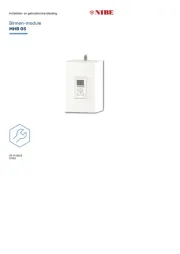
29 Juli 2025
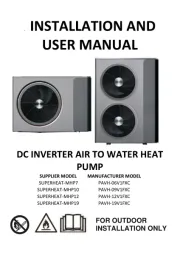
15 Juni 2025
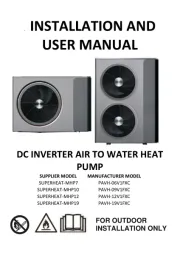
15 Juni 2025
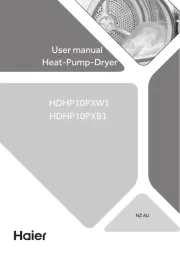
11 Juni 2025
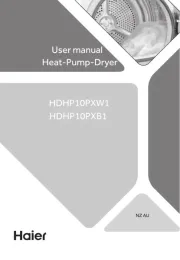
11 Juni 2025

10 Juni 2025
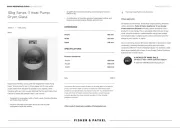
6 Juni 2025
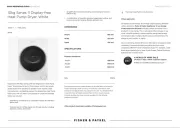
4 Juni 2025
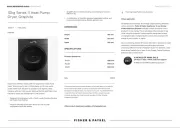
4 Juni 2025
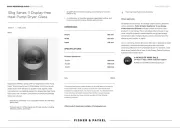
3 Juni 2025